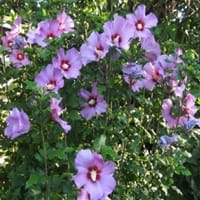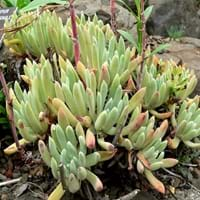Life Span
Perennial
Perennial
Origin
Australia
California
Types
Not available
Ulva lactuca, Ulva intestinalis
Habitat
subtropical regions, Temperate Regions, Tropical regions, Warmer regions
Coastal Regions, shores
USDA Hardiness Zone
9-11
10-11
Sunset Zone
H1, H2, 13, 14, 15, 16, 17, 20, 21, 22, 23, 24
9, 14, 15, 16, 17, 19, 20, 21, 22, 23, 24
Habit
Upright/Erect
Rosette/Stemless
Flower Color
Blue, Purple, Blue Violet
Yellow, Red
Flower Color Modifier
Not Available
Not Available
Fruit Color
Not Available
Not Available
Leaf Color in Spring
Dark Green
Gray Green, Yellow green, Gray
Leaf Color in Summer
Dark Green
Gray Green, Yellow green, Gray
Leaf Color in Fall
Dark Green
Gray Green, Yellow green, Gray
Leaf Color in Winter
Dark Green
Gray Green, Yellow green, Gray
Leaf Shape
Irregular
Cone shaped to oblong
Plant Season
Spring, Summer, Fall, Winter
Spring, Summer, Fall, Winter
Sunlight
Full Sun
Full Sun
Growth Rate
Medium
Medium
Type of Soil
Clay, Loam, Sand
Sand
The pH of Soil
Acidic, Neutral, Alkaline
Acidic, Neutral
Soil Drainage
Well drained
Well drained
Bloom Time
Indeterminate
Late Spring, Early Summer
Tolerances
Not Available
Drought
Where to Plant?
Ground, Pot
Container, Ground
How to Plant?
Seedlings, Semi-hardwood cuttings
Leaf Cutting, Seedlings, Stem Cutting
Plant Maintenance
Medium
Medium
Watering Requirements
Average Water Needs, Do Not over Water, Requires regular watering
Water slowly, and allow to dry completely between soakings
In Summer
Lots of watering
Lots of watering
In Spring
Moderate
Moderate
In Winter
Average Water
Average Water
Soil pH
Acidic, Neutral, Alkaline
Acidic, Neutral
Soil Type
Clay, Loam, Sand
Sand
Soil Drainage Capacity
Well drained
Well drained
Sun Exposure
Full Sun
Full Sun
Pruning
Remove damaged leaves, Remove dead branches, Remove dead leaves
Remove damaged leaves, Remove dead branches, Remove dead leaves
Fertilizers
All-Purpose Liquid Fertilizer
Fertilzer with low nitrogen content
Pests and Diseases
Red blotch, Rust aphids
Fungal Diseases, Root rot
Plant Tolerance
Not Available
Drought
Flower Petal Number
Single
Single
Foliage Texture
Medium
Bold
Foliage Sheen
Matte
Matte
Attracts
Butterflies, Flying insects, Hummingbirds, Insects
Hummingbirds, Butterflies
Allergy
Not Available
Mild Allergen
Aesthetic Uses
Borders, Showy Purposes, small hedge
Not Used For Aesthetic Purpose
Beauty Benefits
Not Available
Not Available
Environmental Uses
Air purification
Air purification
Medicinal Uses
High blood pressure, lowering blood pressure
Bone strength, Rich in Iron, Rich in protein
Part of Plant Used
Flowers, Leaves
Leaves
Other Uses
Decoration Purposes
Used in salads, Used to flavour soups
Used As Indoor Plant
Yes
No
Used As Outdoor Plant
Yes
Yes
Garden Design
Container, Feature Plant, Hedges, Mixed Border, Rock Garden, Wall
Container, Houseplant, Mixed Border, Rock Garden, Wall
Botanical Name
ALYOGYNE huegelii 'Monle'
DUDLEYA caespitosa
Common Name
Blue Hibiscus, Purple Delight Blue Hibiscus
Sealettuce, Sand lettuce, Coast dudleya
In Hindi
Blue Hibiscus
Sea Lettuce
In German
Blauer Hibiskus Baum
Meersalat
In French
Bleu Hibiscus Arbre
La laitue de mer
In Spanish
Azul árbol del hibisco
lechuga de mar
In Greek
Μπλε Hibiscus Tree
θάλασσα Μαρούλι
In Portuguese
Árvore azul do hibiscus
alface mar
In Polish
Niebieski Hibiscus Drzewo
Sea sałata
In Latin
Hibiscus lignum blue
Lactuca mare
Phylum
Magnoliophyta
Magnoliophyta
Class
Magnoliopsida
Magnoliopsida
Family
Malvaceae
Crassulaceae
Clade
Angiosperms, Eudicots, Rosids
Angiosperms, Core eudicots, Eudicots
Subfamily
Malvoideae
Sedoideae
Number of Species
Not Available
Not Available
Importance of Blue Hibiscus and Sea Lettuce
Want to have the most appropriate plant for your garden? You might want to know the importance of Blue Hibiscus and Sea Lettuce. Basically, these two plants vary in many aspects. Compare Blue Hibiscus and Sea Lettuce as they differ in many characteristics such as their life, care, benefits, facts, etc. Every gardener must at least have the slightest clue about the plants he wants to plant in his garden. Compare their benefits, which differ in many ways like facts and uses. The medicinal use of Blue Hibiscus is High blood pressure and lowering blood pressure whereas of Sea Lettuce is Bone strength, Rich in Iron and Rich in protein. Blue Hibiscus has beauty benefits as follows: Not Available while Sea Lettuce has beauty benefits as follows: Not Available.
Compare Facts of Blue Hibiscus vs Sea Lettuce
How to choose the best garden plant for your garden depending upon its facts? Here garden plant comparison will help you to solve this query. Compare the facts of Blue Hibiscus vs Sea Lettuce and know which one to choose. As garden plants have benefits and other uses, allergy is also a major drawback of plants for some people. Allergic reactions of Blue Hibiscus are Not Available whereas of Sea Lettuce have Mild Allergen respectively. Having a fruit bearing plant in your garden can be a plus point of your garden. Blue Hibiscus has no showy fruits and Sea Lettuce has no showy fruits. Also Blue Hibiscus is flowering and Sea Lettuce is not flowering . You can compare Blue Hibiscus and Sea Lettuce facts and facts of other plants too.





